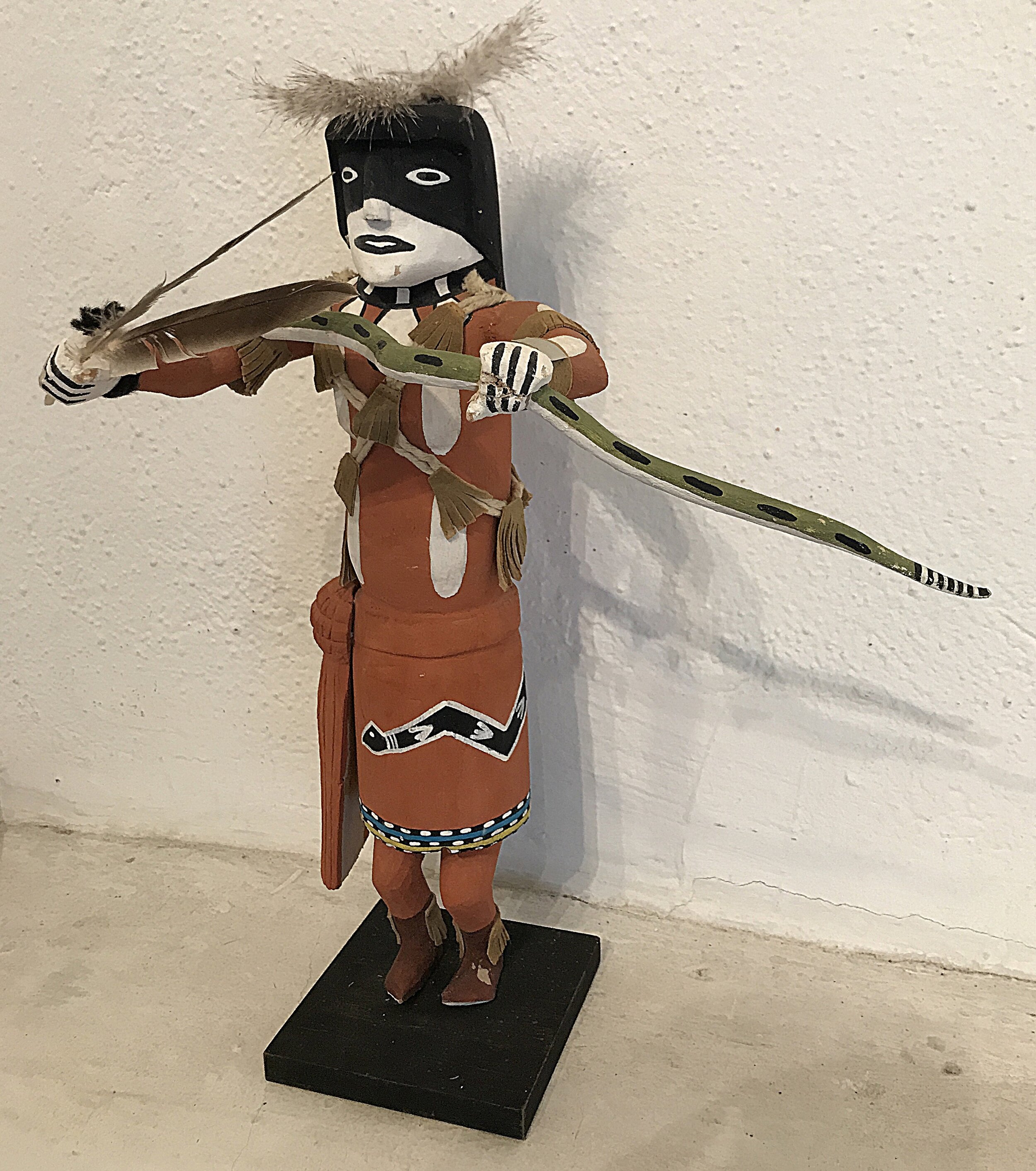This remarkable Hopi puppet set was made by Dean Howato, son of the famed Walter Howato, who helped keep old style katsina carving alive through the 1960s, 70s and 80s until it was revived. 9 by 11 inch base. 15 inches tall. Absolutely unique. $2100. (SANTA FE)
Both of these were carved in the style of Tewaquaptewa by his great-grandson, Ryon Polequaptewa. The first one at left is 11.5 inches tall. $600. The second one is 11.5 inches high to feather tips and SOLD. (BOTH IN SANTA FE)
Tewaquaptewa (1873-1960) was the last traditional kikmongwi of Orayvi Village. He began carving in his very distinctive style in the 1920s. He dolls often suggest specific katsinas but in each case are in fact an amalgam of design elements from several different katsinas. ( See: Barry Walsh, “Kikmongwi as Artist: The Katsina Dolls of Wilson Tawaquaptewa,” Winter 1998, American Indian Art magazine.














